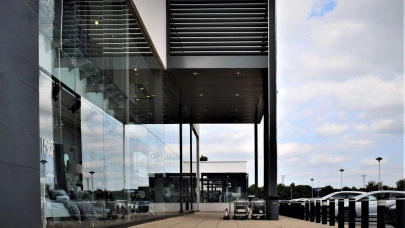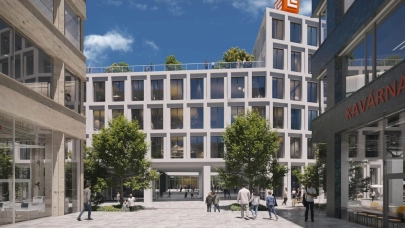
At the end of 2018, modern office stock in Poland’s eight biggest cities (Krakow, Wrocław, Tricity, Katowice, Poznań, Łódź, Szczecin and Lublin) stood at more than 4.9 million sqm (+12% y/y). Krakow, Wrocław and Tricity topped the league table for total office stock. The Wrocław office market was the second regional city after Krakow to see its volume of office space exceed one million sqm. Cushman & Wakefield has summarized 2018 on Poland’s regional office markets.
Key findings:
- In 2018, office investment volume in Poland’s regional cities hit €900 million across 12 transactions.
- Prime office yields ranged from 5.75% in Krakow to 8.25% in Szczecin, indicating a 0.25 pp compression over the year in all regional cities except Szczecin and Poznań.
- Wrocław became Poland’s second regional market after Krakow with its total office stock surpassing the one million sqm mark.
- Poznań and Łódź reported relatively high leasing volumes: 70,400 sqm and 56,100 sqm, respectively.
At the end of 2018, modern office stock in Poland’s eight biggest cities (Krakow, Wrocław, Tricity, Katowice, Poznań, Łódź, Szczecin and Lublin) stood at more than 4.9 million sqm (+12% y/y). Krakow, Wrocław and Tricity topped the league table for total office stock. The Wrocław office market was the second regional city after Krakow to see its volume of office space exceed one million sqm.
In 2018, new supply on the regional markets reached 512,600 sqm, up by more than 55,700 sqm on 2017’s level. Last year’s largest office completions included Olivia Star in Gdansk (45,700 sqm), Olivia Prime A in Gdansk (28,000 sqm), Sagittarius Business House in Wrocław (24,900 sqm), Ogrodowa 8 in Łódź (24,700 sqm) and Equal Business Park C in Krakow (23,500 sqm). At the end of 2018, the regional development pipeline comprised 76 office projects totalling more than 878,000 sqm, most of which was under construction in Krakow (17 schemes), Tricity (14) and Wrocław (11), the average project size being 12,400 sqm.
Office take-up amounted to nearly 650,000 sqm in 2018, which represented a 4% y/y decrease. Of all the regional office markets, the strongest leasing activity was in Krakow, Wrocław and Tricity, which accounted respectively for 33%, 25% and 13% of Poland’s total transaction volume (excluding Warsaw).
“Robust office demand was driven on the regional markets, among other things, by expanding BSS companies which consolidated offices in individual cities (Credit Agricole in Wrocław) or gained footholds in new locations (Fujitsu Global Delivery Center in Katowice). The trend towards decentralisation is also benefiting smaller cities such as Rzeszów (Premium Mobile), Bydgoszcz (SII), Toruń (Mimecast), Gliwice (Enginiety) and Częstochowa (SII),” said report author Jan Szulborski, Consultant, Consulting and Research, Cushman & Wakefield.
In 2018, absorption on all the regional office markets hit 534,200 sqm, up by more than 21% on the level recorded in the peak year 2017. A major role in this volume was played by a significant number of pre-lets signed in 2017 for space at office buildings completed in 2018. The highest percentage increases in absorption rates were recorded in Lublin (140%), Katowice (118%) and Wrocław (99%).
At the end of 2018, the overall vacancy rate on in the eight regional cities stood at 8.4% (-1.5 pp y/y), ranging from 5.1% in Szczecin to 15.4% in Lublin. Limited availability of prime office schemes pushed effective rents up in some locations in Wrocław, Katowice and Poznań. Rents remained at €12.00–14.50/sqm/month on most regional markets.



